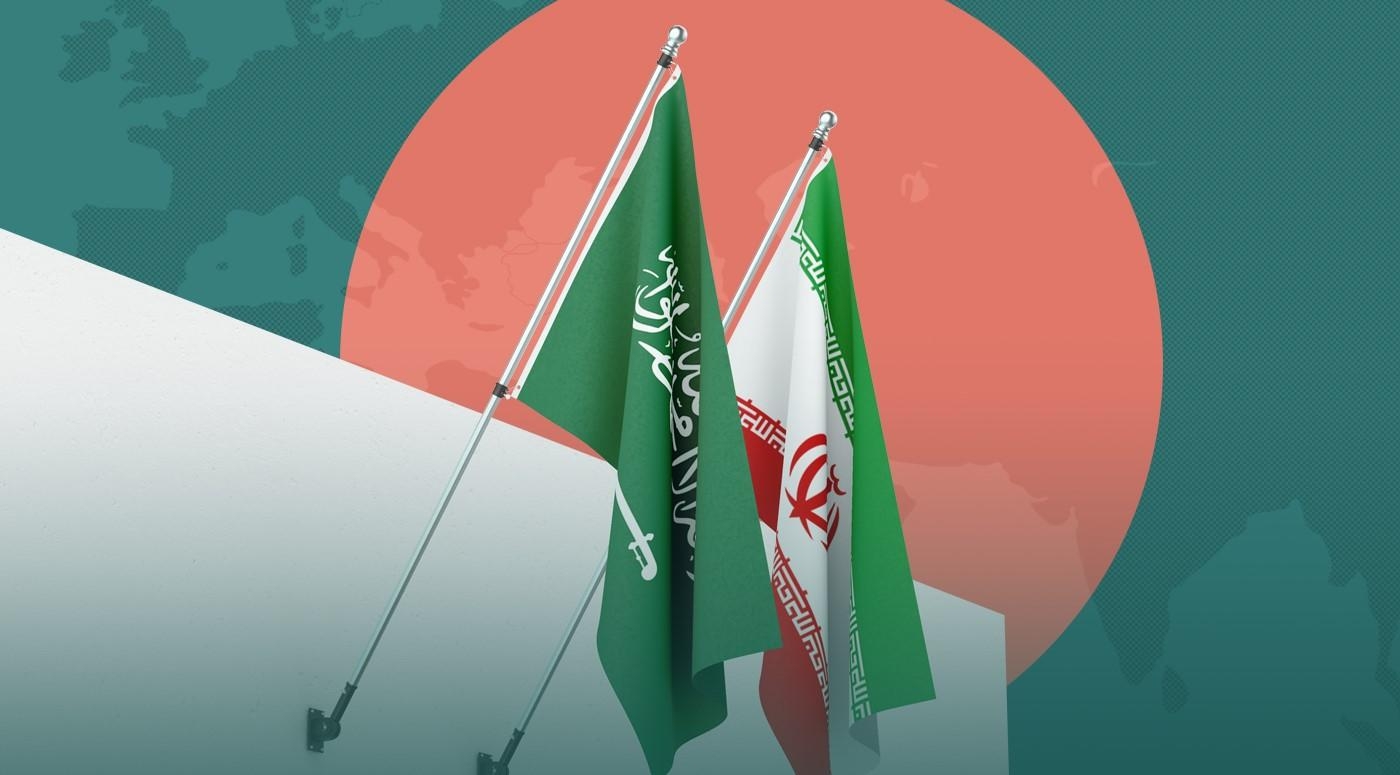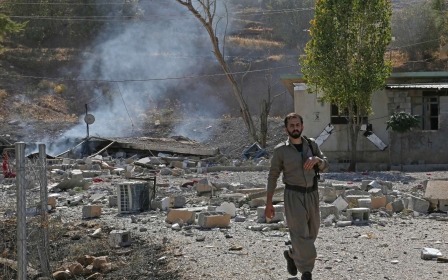Iran and Saudi Arabia: Over four decades of tension

Iran and Saudi Arabia will restore diplomatic relations after trilateral talks in Beijing on Friday, after seven years of severed ties.
It’s the latest turning point in a tumultuous relationship between the two countries dating back to Iran's Islamic revolution in 1979.
Saudi Arabia tacitly supported Iraq during its war against Iran in the 1980s, before a relative easing of tensions. Those were reignited following anti-government protests across the region in the Arab Spring.
On at least two occasions, incidents at the annual Hajj pilgrimage have also resulted in major tensions between the regional rivals.
Middle East Eye takes a look at Iran-Saudi ties over the past four decades.
New MEE newsletter: Jerusalem Dispatch
Sign up to get the latest insights and analysis on Israel-Palestine, alongside Turkey Unpacked and other MEE newsletters
Iran-Iraq war and Hajj crackdown
The Islamic Republic of Iran was created in April 1979, as Shia clerics toppled the decades-long dynastic rule of the Pahlavi dynasty.
Saudi Arabia had a rocky relationship with Iran under the Shah Mohammad Reza Pahlavi, but this improved towards the latter part of his reign, and both were original members of the Opec oil cartel.
The introduction of a new, theocratic republic was seen as a threat by Riyadh, who, among other Sunni-ruled regional neighbours, accused Tehran of attempting to export its revolution and assert influence in the region.
One of those neighbours, Iraq, then led by Saddam Hussein, attacked Iran in September 1980 and launched an eight-year war.
Saudi Arabia was publicly neutral in the conflict, but was widely reported to have made its ports available for equipment exports to Iraq and to have provided significant financial support.
The six-nation Gulf Cooperation Council (GCC), of which Saudi Arabia is a member, was set up in May 1981 partly as a response to Iran’s revolution and the Iraq-Iran war.
Ties between the two countries nosedived in July 1987 when Saudi security forces violently cracked down on an anti-US protest by Iranian pilgrims in the holy city of Mecca during the Hajj pilgrimage. Some 402 pilgrims were killed, of whom 275 were Iranian.
In response, protesters attacked and occupied the Saudi embassy in Tehran and set fire to Kuwait’s embassy.
A Saudi diplomat died during the incident, after falling out of an embassy window. Riyadh accused Iranian authorities of delaying his transfer to hospital.
Saudi Arabia’s King Fahd severed ties with Iran over the Hajj incident and ensuing escalation in 1988.
Tehran subsequently boycotted the pilgrimage for three years, after the Gulf kingdom restricted the number of Iranian pilgrim visas over the 1987 incident.
From detente to proxy wars
Relations were restored between the two countries in 1991, setting in motion a period of rapprochement.
In August 1997, President Mohammad Khatami took power in Iran, and attempted to reach out to Gulf rivals.
In December 1997, Crown Prince Abdullah visited non-Arab parts of Iran, becoming the most senior Saudi royal or official to do so since the revolution.
Two years later, Khatami became the first Iranian president to visit Saudi Arabia since 1979. The two countries went on to sign a security agreement in 2001.
But the good times didn’t last long: the 2003 US-led invasion of Iraq toppled Saddam Hussein and brought the country’s Shia majority to power. Iran has since asserted major influence on its neighbour.
In 2005, President Mahmoud Ahmadinejad came to power in Iran, taking a more hardline approach to regional foreign policy than his predecessor.
Iran stepped up its nuclear energy programme, raising Saudi suspicions about its perceived attempts to assert its dominance.
In October 2011, two Iranians were charged by Washington with attempting to murder Foreign Minister Adel al-Jubeir, Riyadh’s ambassador to the US.
Following anti-government protests across several Middle East and North Africa countries, which came to be known as the Arab Spring, Tehran and Riyadh found themselves on opposing sides of several flashpoints and conflicts.
In Bahrain, Saudi Arabia sent troops to crush a Shia-led pro-democracy protest movement in 2011, and subsequently accused Iran of stoking tensions in the country.
In Syria, where President Bashar al-Assad’s violent crackdown on protests led to a decade-long civil war, which still persists, Iran backed Assad while Riyadh lent its support to opposition forces.
Meanwhile in Yemen, Iran-backed Houthi forces took over large swathes of the country, including the capital Sanaa, leading to a Saudi-led military intervention in March 2015.
MBS calls Khameini 'new Hitler'
The Hajj pilgrimage would once again become a major point of tension between the two in September 2015, when around 2,300 foreign pilgrims died in a crush. Hundreds of those killed were Iranians.
Supreme Leader Ayatollah Ali Khameini accused Saudi Arabia of “murder”, and said it was “not qualified to manage the Two Holy Mosques”.
In January 2016, the Gulf kingdom executed Shia cleric Nimr al-Nimr, who had been involved in anti-government protests in Saudi Arabia’s eastern province.
Iran strongly condemned the execution, and protesters attacked Saudi diplomatic missions in Tehran and the northeastern city of Mashhad. Saudi Arabia cut ties with Iran over the escalation.
The following year, Riyadh and its regional allies launched a three-and-a-half-year boycott of Qatar, accusing it of harbouring close ties with Iran and supporting terrorism. Doha denied the charges, and the rift came to an end in January 2021.
Saudi Crown Prince Mohammed bin Salman said in March 2018 that if Tehran obtained a nuclear weapon, “we will follow suit”. He also called Iran’s Supreme Leader Ayatollah Khameini “the new Hitler”.
In more recent years, several rounds of diplomatic talks have been held between the regional foes in Iraq and Oman.
The China-brokered agreement on Friday represents the most significant breakthrough, and has been welcomed by a number of countries, including the US, Iraq, Oman and the UAE.
Middle East Eye delivers independent and unrivalled coverage and analysis of the Middle East, North Africa and beyond. To learn more about republishing this content and the associated fees, please fill out this form. More about MEE can be found here.






